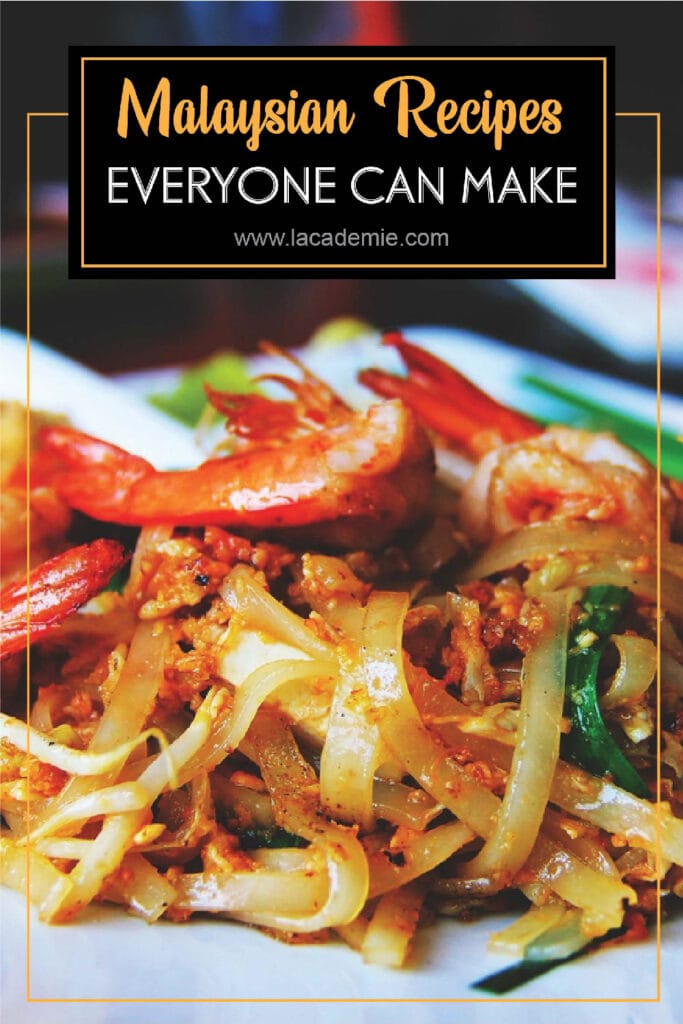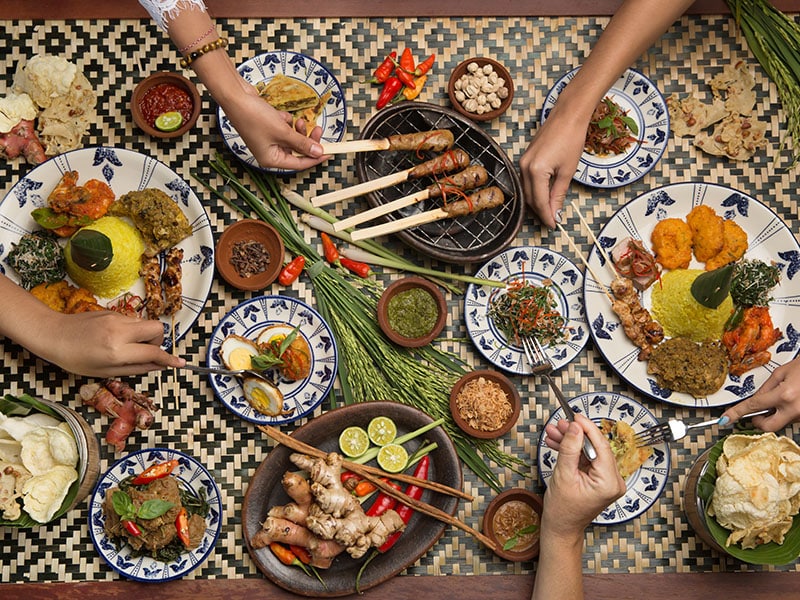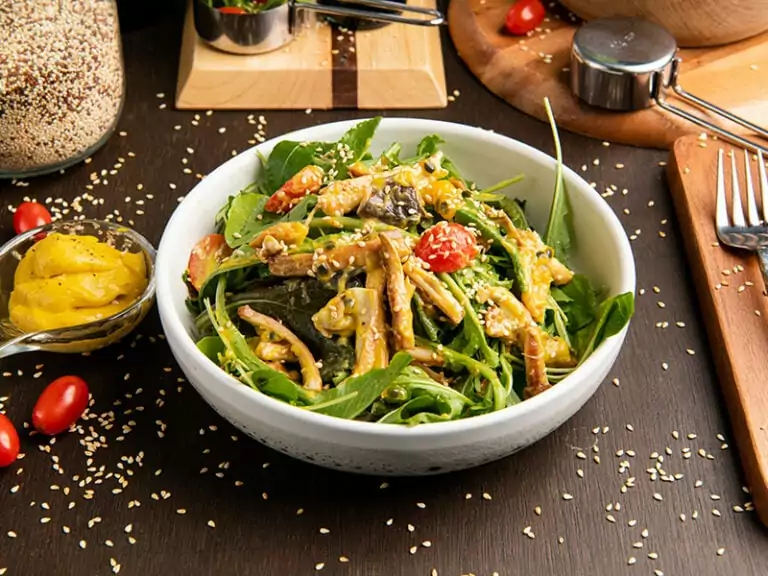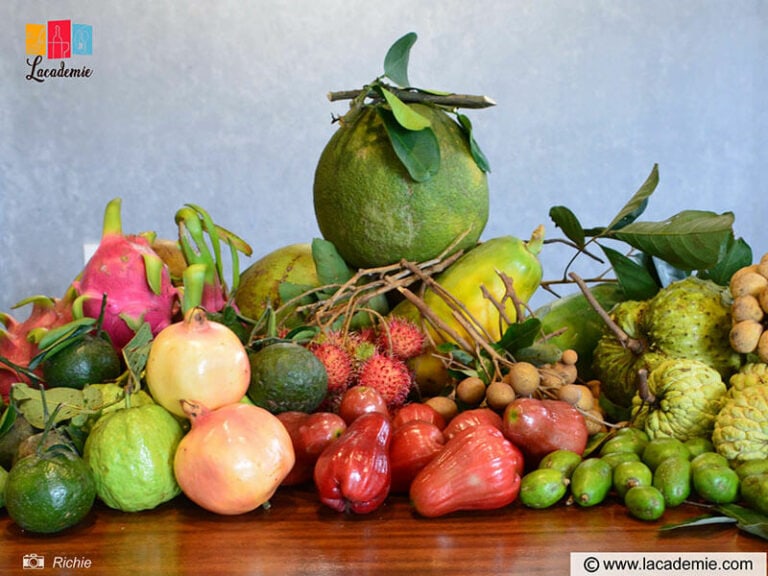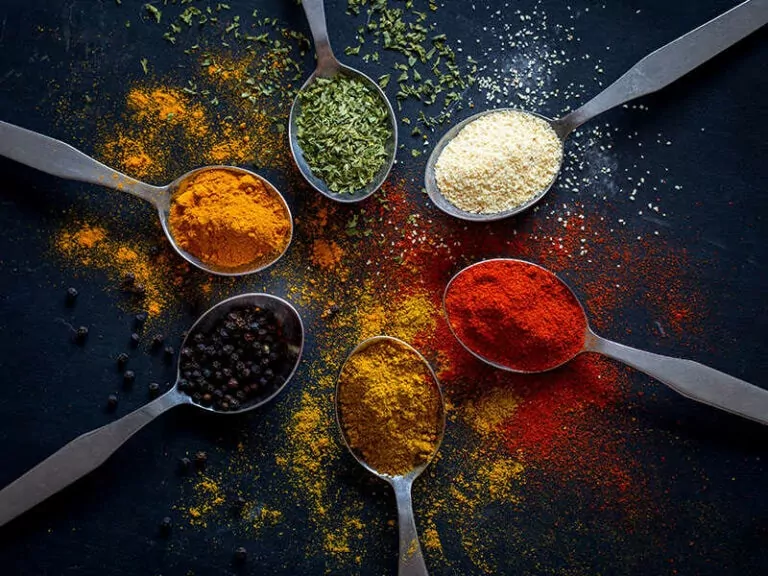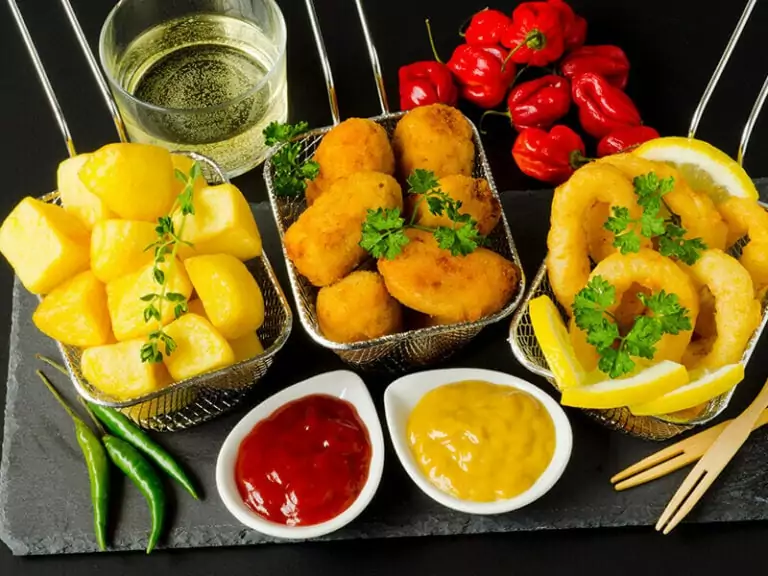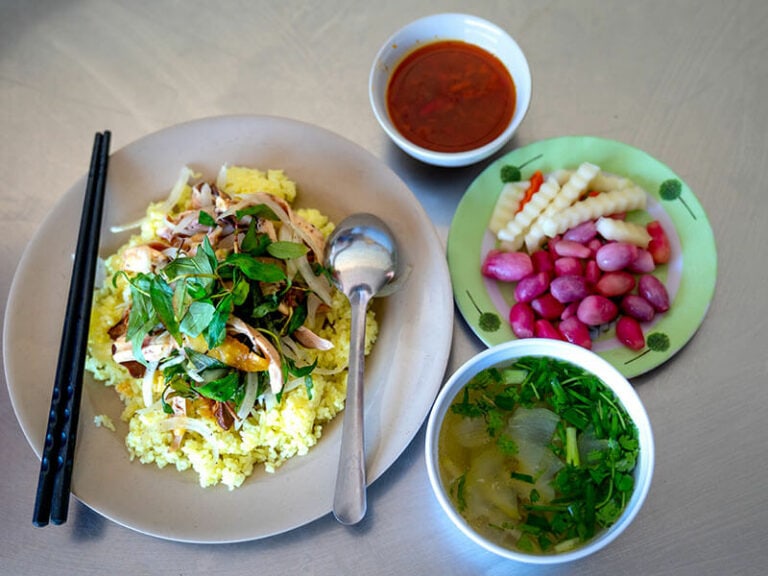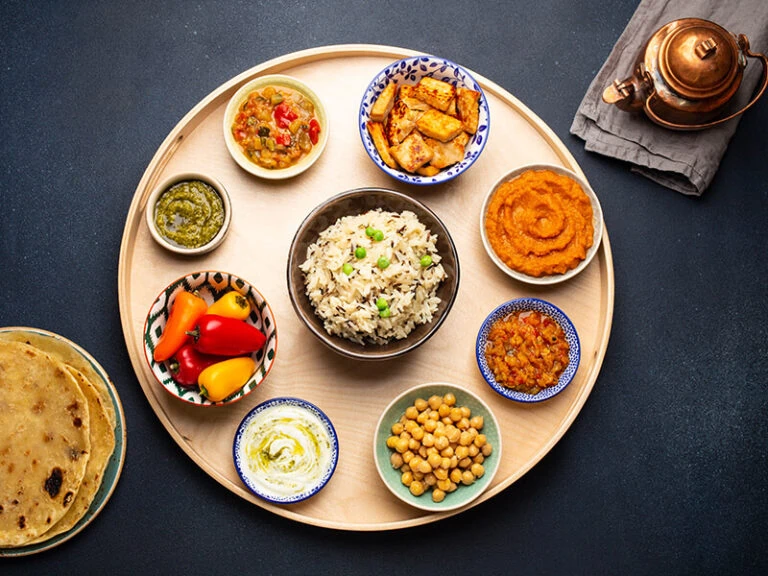Welcome to a tantalizing selection of 30 easy Malaysian recipes, an array that promises to take you on a delightful culinary journey. Our comprehensive collection includes 13 enticing main courses, 8 versatile side dishes, and 9 irresistible desserts.
Embarking on this gastronomic adventure, you’ll discover that Asian cuisine isn’t limited to the known territories of Japan, China, Thailand, or Vietnam. These nations have indeed gifted the world with iconic dishes, and their culinary prowess is well-known. However, nestled among these giants, Malaysian cuisine has a unique charm, quietly yet confidently winning over those who venture into its flavorful domain.
The beauty of these Malaysian recipes lies in their simplicity and accessibility. Whether you’re new to Malaysian cuisine or seeking to expand your culinary repertoire, this array of recipes will guide you effortlessly. From sweet delicacies to savory sensations, these dishes embody the rich culinary traditions of Malaysia, providing an opportunity for both novices and seasoned cooks to experience authentic Asian flavors.
So, without further ado, let’s delve into this vibrant world of easy Malaysian recipes. Each dish is a testament to the country’s culinary diversity, crafted to be simple and enjoyable to prepare. Happy cooking!
13 Malaysian Main Course Recipes
- Nasi Lemak
- Sambal Udang
- Malaysian Fish Curry
- Mee Goreng
- Red Curry Laksa Soup
- Wonton Mee
- Char Kway Teow
- Chicken Rendang
- Ayam Masak Merah
- Mee Rebus
- Bak Kut Teh
- Malaysian Curry Tofu
- Mango Chicken
8 Malaysian Side Dishes
- Malaysian Popiah
- Kuih Pie Tee
- Kerabu
- Roti Canai
- Murtabak
- Malaysian Mango Salad
- Malaysian Satay Chicken
- Malaysain Beef Satay
9 Malaysian Dessert Recipes
- Rojak Buah
- Begedil
- Mashed Banana Fritters
- Black Sticky Rice
- Pandan Balls With Coconut Sugars
- Pandan Coconut Ice Cream
- Pineapple Jam Tart
- Calamsi Juice
- Bubur Cha Cha
These easy recipes for authentic Malaysian dishes will help you prepare irresistible and exotic dishes from this Asian country. Whatever you’re looking for, I’m sure that this list will have something you need.
1. Nasi Lemak
Nasi lemak is a staple dish for breakfast in Malaysia. It consists of fragrant rice, chicken, fried anchovies, sambal, cucumber slice, and a boiled egg. Because the rice is steamed in coconut milk, it’s quite rich and fat.
Traditionally, nasi lemak is served for breakfast, but you can enjoy this robust and flavorful dish at any time of the day. When preparing nasi lemak, I like making the sambal as spicy as I can handle. This really makes the dish explode with flavors.
2. Sambal Udang
Any fan of spicy foods shouldn’t miss out on sambal udang (Shrimps In Chili Paste), which is shrimp in chili paste. Now, you may be thinking that shrimps are the star in this dish. However, I suspect the main reason sambal udang got so popular is due to its rich, fragrant, and savory sauce.
Normally, Malaysians would serve this fiery dish with white rice, but I’ve noticed many people use sambal udang as a dip for bread as well. This is why you should make sure that there’s plenty of sauce in your sambal udang, or else the sauce will run out before the shrimp.
3. Malaysian Fish Curry
Alright, I admit that fish is usually not the first ingredient one might think of at the mention of curry. In fact, it wasn’t until I started making Malaysian recipes that I became aware of this fascinating combination.
Personally, I think the name “fish curry” doesn’t do the dish justice, as it’s far more complex and delicious than that. It’s impossible to criticize anything about this curry, as it combines all the best spices and ingredients in Asian cuisines to bring you a festival of flavors and textures.
Fish curry isn’t only famous in Malaysia alone. In fact, fish curry is considered a signature dish in Mongolian cuisine as well. And like its Malaysian counterpart, Mongolian fish curry also packs delicious flavors that will get you addicted.
4. Mee Goreng
A famous fried noodle dish in both Malaysia and Indonesia, mee goreng is famous for its sweet sticky sauce. In Malaysia, mee goreng usually has a faint hint of curry powder. This is why even though it’s one of the easiest dishes to make, mee goreng boasts a complexity of flavors.
You can throw several different ingredients into mee goreng. There’s no fixed rule as to what you can and can’t add to the dish. The most common combination you can find in mee goreng is prawns, chicken, cabbage, green onion, bean sprout, and egg ribbons.
5. Red Curry Laksa Soup
Prepare to have your mind blown away with red curry laksa soup, which is a curried thick wheat noodle soup with a coconut base and several toppings. The most common toppings for laksa soup are shredded chicken, sambal, bean sprouts, and fried tofu.
The spices used for laksa soup can vary depending on each region, but it generally consists of lemongrass, turmeric, red chilies, garlic, and belacan (famous Malaysian shrimp paste). For simplicity’s sake, you can opt for store-bought Malaysian curry powder.
6. Wonton Mee
Wonton mee, a culinary delight originating from the culinary landscapes of Asia, holds a significant place in the diverse world of noodle dishes. This entity, beloved and cherished by many, takes on a unique identity in the context of Malaysian cuisine. Wonton mee, in its Malaysian iteration, stands out for its remarkable versatility, with variations that can be either dry or served with a savory soup.
As you explore this entity, wonton mee, the first thing that captures your attention are its two constant companions: wontons and char siu. The wontons, pockets of flavor-filled goodness, can be fried or boiled depending on preference, adding a distinctive texture to each bite. The char siu, a sweet and savory barbecued pork, lends a meaty indulgence to the dish, balancing the mildness of the noodles and the vibrant kick of the wontons.
No matter how it is served, this entity, wonton mee, encapsulates the heart and soul of Malaysian cuisine in each delicious bowl, showcasing the culinary traditions and flavors that make the country’s food so unforgettable. The Malaysian wonton mee is not just another noodle dish, but a testament to the enduring allure of classic Asian cuisine.
7. Char Kway Teow
Char Kway Teow is stir-fried noodles with bean sprouts, chives, shrimps, Chinese sausage, eggs, and soy sauce. The fresher the ingredients are, the more likely you will succeed in whipping up a dish of delicious Char Kway Teow.
Allow me to let you in on a secret: the keys to an authentic Char Kway Teow are high heat and a large carbon steel wok. These will give the Char Kway Teow a wok hei flavor, which roughly translates to “breath of the wok.” Wok hei is a crucial component in many Asian stir-fried dishes.
8. Chicken Rendang
Chicken rendang is a chicken stew containing many spices and coconut milk. You can think of chicken rendang as a thick, creamy, and spicy coconut chicken stew. This savory Malaysian dish is usually served with hot, steamy rice.
One thing I love about chicken rendang is that I don’t have to wait hours for the chicken to marinate. There’s no need to hover over the stove, waiting for the chicken to simmer for hours on end either. Chicken rendang is just that sort of dish – delicious and incredibly hassle-free.
9. Ayam Masak Merah
Because ayam masak merah is made with similar spices as chicken curry, you might see many people refer to this dish as “red chicken curry.” However, don’t expect ayam masak merah to taste anything like curry, as both its flavors and textures are different from the curry.
In ayam masak merah, chicken is to be seasoned with turmeric and salt before being fried. Then, you’ll need to simmer the fried chicken in spiced tomato gravy until the sauce thickens. This will give you a flavorful, robust dish to impress your friends and family.
10. Mee Rebus
You can find mee rebus, which is egg noodles covered in thick potato-based gravy, virtually everywhere in Malaysian. This dish tends to be garnished with chilis, bean sprouts, hard-boiled eggs, and lime juice.
To make the perfect mee rebus, you’ll need to master making its gravy. The base for the gravy is mashed potatoes. Then, season the mashed potatoes with lemongrass, galangal, chicken powder, dark soya sauce, curry powder, and sugar.
11. Bak Kut Teh
Even though bak kut teh (pork ribs in herbal soup) originated from China, it has found its place in Malaysian cuisine and has been adapted to suit people’s tastes. This means that this China-inspired dish still has its distinctive Malaysian flavors.
As easy as making bak kut teh is, the tricky thing about it is to find the right spices and herbs for it, as these aren’t sold in common grocery stores. However, strange as it may sound, you can expect to find these in medicine shops in China/Asian markets.
12. Malaysian Curry Tofu
Before Malaysian curry tofu, it wasn’t imaginable for me that it was possible to make vegan, dairy-free curry so delicious. However, Malaysian curry tofu defies all expectations – it’s meat-free, yet it’s aromatic, savory, and tastes like authentic curry.
I suspect the main reason why Malaysia’s curry tofu tastes so amazing is because of the rich coconut milk and the various spices. So, even though this vegan curry features mainly tofu only, it still shines with its complex flavors.
13. Mango Chicken
I suppose that mango and chicken can sound like an odd combination, but let me assure you that this dish will whet your appetite. In this simple Malaysian dish, ripe mangoes truly succeed in imparting a characteristic tangy and sweet flavor to the chicken.
As there are many varieties of mangoes, it’s important to choose the right one for this dish; you can’t just select any random ripe mangoes for this recipe. The best varieties for mango chicken dishes are Apple Rumanis and Honey Mangoes.
14. Malaysian Popiah
Spring rolls are a prominent dish in many Asian countries. In Malaysia, spring rolls are referred to as popiahs, which boast distinct Malaysian flavors. As popiahs are usually deep-fried, they have a crispy, crunchy exterior and soft, savory interior.
Aside from the stuffings, popiah has a decent layer of savory sauces that make it stand out from many other spring rolls. So when making popiahs, you should never forget to smear some hoisin sauce on the wrapper and drizzle some chili sauce on top.
15. Kuih Pie Tee
To make this dish, you’ll need to have a Pie Tee mold, which will help the batter form into the proper shape. You can find Pie Tee molds in virtually all Asian markets, and one mold is enough to last you a lifetime.
With a Pie Tee mold, you’ll be able to make beautiful cases, which you’ll need to deep fry. Then fill the Pie Tee cases with stuffings, which features carrots, french beans, chopped yam beans, and stir-fried shrimps with minced garlic.
16. Kerabu
Kerabu is a spicy Malaysian salad made with prawns, dried shrimps, vermicelli, grated coconut, lemongrass, and kaffir lime leaves. This spicy Malaysian salad is then garnished with mint leaves, lime, red chili peppers, and fried shallot.
An ingredient that can’t be missing in kerabu is sambal belacan, which is a Malaysian shrimp paste to give the dish a spicy flavor. However, if you can’t find sambal belacan anywhere, Thai tom yam paste is an acceptable substitute.
17. Roti Canai
Roti canai is another famous type of flatbread in Malaysian with traces of influences from India. This buttery, crispy Malaysian flatbread is usually served with dhal curry, chicken or fish curry. It can also be enjoyed as a dessert with sweetened condensed milk or chocolate cream.
Because roti canai can be enjoyed as both a snack and a side dish for the main course, you’ll see that roti canai appears a lot in many Malaysian dishes. Considering the fluffy and crunchy layers of roti canai, I understand how this dish becomes so popular in Malaysian cuisine.
18. Murtabak
Because murtabak can be found in many countries, there’s a high chance that you might’ve come across this dish before. Murtabak, also known as matabbak or mutabbak, is a variation of flatbread stuffed with fillings such as veggies, meat, eggs, and onion.
As a famous Malaysian street food, murtabak contains egg, beef, and onion fillings. However, you can subtract or add any ingredients to the filing according to your likings. Just make sure that the dough is spread until it’s transparent thin, as this will make the murtabak extra crispy.
19. Malaysian Mango Salad
Malaysian mango salad is a side dish best suited for hot summer days. With its juicy, sweet, and spicy taste, Malaysian mango salad can also pair with seafood, grilled meat, and even plain white rice.
The best part about Malaysian mango salad is that it’s very easy to prepare. You can find its ingredient in virtually all grocery stores, and it takes less than 10 minutes to make this amazing salad.
20. Malaysian Satay Chicken
Crunchy satay chicken can always make me sigh with contentment. It’s luscious, sweet, and delicious chicken marinated in Asian spices. I’ve been guilty of stuffing myself full of this savory dish at least a dozen times.
Even though Malaysian satay chicken pairs well with cucumber and onions, I’ve noticed that many people (including myself) prefer to enjoy this with grilled pineapple slices. Trust me; a tangy, juicy bite of pineapple never fails to elevate satay chicken.
21. Malaysian Beef Satay
Hailed as the king of Malaysian street food, beef satay is a savory snack that you can indulge yourself in. Beef satay is marinated thoroughly in Asian spices before being grilled. As a result, beef satay is flavorful and aromatic.
It’s not Malaysian beef satay if you don’t serve it with spicy peanut sauce. Don’t forget to pair beef satay with some fresh cucumbers and onions, as they will help “refresh” your palate after each bite.
Nothing is better than to finish your meal with easy Malaysian recipes for desserts. From fruity snacks to refreshing drinks, these enticing desserts will make sure your meal ends on a high note.
22. Rojak Buah
Rojak Buah is a spicy salad made from various Malaysian fruits, which originates from Penang. Whenever I think of Rojak Buah, I think of a divine combination of tangy fruits, fresh and crunchy vegetables, crunchy nuts, and sweet, spicy sauce.
To make Rojak Buah truly Rojak Buah, you’ll have to succeed in making the sweet and spicy sauce, which has an umami taste. This means that you’ll have to get your hands on hei ko – an indispensable ingredient to give the sauce a thick caramel-like consistency.
Learn how to make the best rojak buah by clicking on this video.
23. Begedil
Begedil (Deep-fried Potato Patties) is scrumptious potato patties with minced meat, layered with beaten egg and deep-fried. If you want to cut down on the oil, you can quickly boil the begedil first before frying them. This will reduce the time these potato patties need to soak in the oil.
These Malaysian-style potato patties are ideal as a midday snack. These can be served with rice or with soto ayam – a type of Malaysian/Indonesian chicken soup.
24. Mashed Banana Fritters
Malaysian mashed banana fritters boast a crunchy exterior and a soft, fluffy inside. They’re made from mashed bananas, which are then mixed with sugar and flour. Afterward, the mixture is deep-fried so that it can gain a golden, crispy outer layer.
Banana fritters are very easy and quick to make, so you can have them for snack time, desserts, or even breakfast. Just remember that the secret ingredient behind delicious banana fritters is overripe bananas; even fairly ripe ones will not work.
25. Black Sticky Rice
Although it might sound like a plain dish for people on a diet, black sticky rice is actually a sweet and glutinous dessert. To prepare this dish, you need to cook the black rice on low to medium heat until the rice grains are all broken up.
Black sticky rice is not complete without its creamy sauce, which is actually coconut milk mixed with salt, sugar, and cornstarch on medium-low heat. When serving black sticky rice, pour this sauce generously on the rice before mixing everything together.
26. Pandan Balls With Coconut Sugars
Known to the natives as ondeh-ondeh, these balls are full of sweet pandan flavor, making it an amazing dessert during tea parties. Pandan balls are green and covered with savory desiccated coconut. Filled with coconut sugars, these Malaysian balls are deliciously sweet.
I’ve seen many people compare the chewy texture of pandal balls with Japanese mochi and this is completely true. However, don’t be fooled into thinking that these two treats are the same. Pandan balls have a very distinct Malaysian flavor that you can never miss.
27. Pandan Coconut Ice Cream
When the weather gets hot, there’s no way you can go wrong with pandan coconut ice cream. As you may have guessed, this cold treat stars rich, creamy coconut milk and pandan leaf extracts. When combined together, these two ingredients can deliver a divine flavor.
For the best pandan coconut ice cream, you should make your own coconut milk. This will help ensure that the resulting ice cream can taste fresh, savory, rich, and even nutty. You can add egg yolks to the milk to make the ice cream denser and creamier.
28. Pineapple Jam Tart
Pineapple jam tarts are a popular sweet treat during the Chinese New Year holiday, especially in Malaysia and Singapore. This Malaysian dessert has a crisp pastry shell and has sweet, tangy pineapple jam in its center.
Pineapple jam tarts always taste better if they’re prepared with homemade pineapple jam. Don’t worry; pineapple jam is ridiculously easy to make.
29. Calamansi Juice
Calamansi juice originated from the Philippines and soon became a popular drink in Malaysia. It’s a refreshing drink that resembles lemonade and is best served cold. Calamansi juice only takes a few minutes to prepare, so you can make this amazing drink to counter the summer’s heat.
30. Bubur Cha Cha
Bubur Cha Cha (coconut milk dessert) is A great dish for those who love the flavors that taro can offer, bubur cha cha is a delicious coconut milk dessert featuring taro, tapioca jelly, sago pearls, and sweet potatoes.
When you look at bubur cha cha, you’ll be instantly drawn to its colorful appearance. And once you take a bite, I’m certain you’ll be in love with this Malaysian dessert.
Despite its seemingly complex look, bubur cha char is actually very easy to prepare. You can also serve this scrumptious dessert either hot or cold, depending on preferences.
Easy Malaysian Recipes For Wholesome Mealtime
I hope that this post has been informative enough to help you prepare Malaysian dishes. Considering how delicious Malaysian cuisines are, I sincerely hope that you can have a chance to try them out for yourself. What’s your favorite recipe so far? Do you know any famous Malaysian dishes that you want to try making at home? Let me know in the comment.
Nutrition Facts
4 servings per container
- Amount Per ServingCalories577
- % Daily Value *
- Total Fat
16.2g
25%
- Saturated Fat 11g 56%
- Cholesterol 130mg 44%
- Sodium 394mg 17%
- Potassium 517mg 15%
- Total Carbohydrate
86.7g
29%
- Dietary Fiber 3.4g 12%
- Sugars 7.3g
- Protein 21.3g 42%
- Calcium 268%
- Iron 7%
- Vitamin D 57%
* The % Daily Value tells you how much a nutrient in a serving of food contributes to a daily diet. 2,000 calories a day is used for general nutrition advice.
